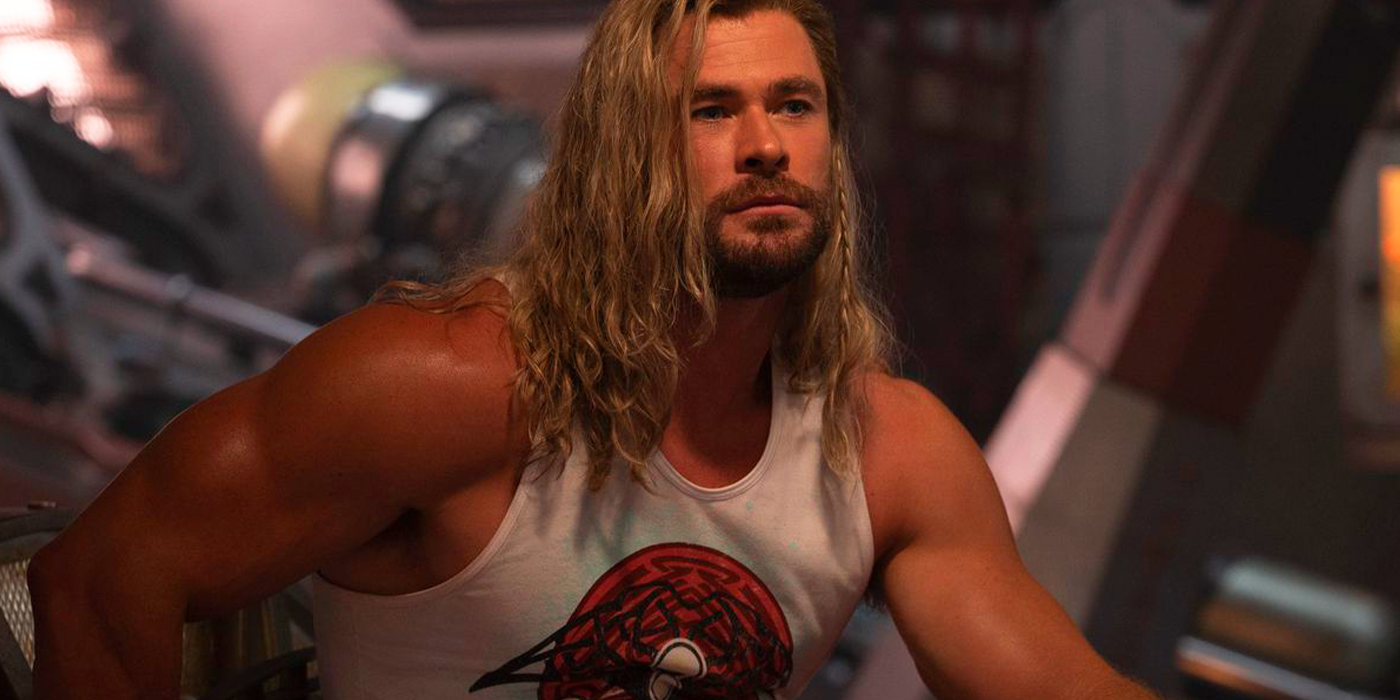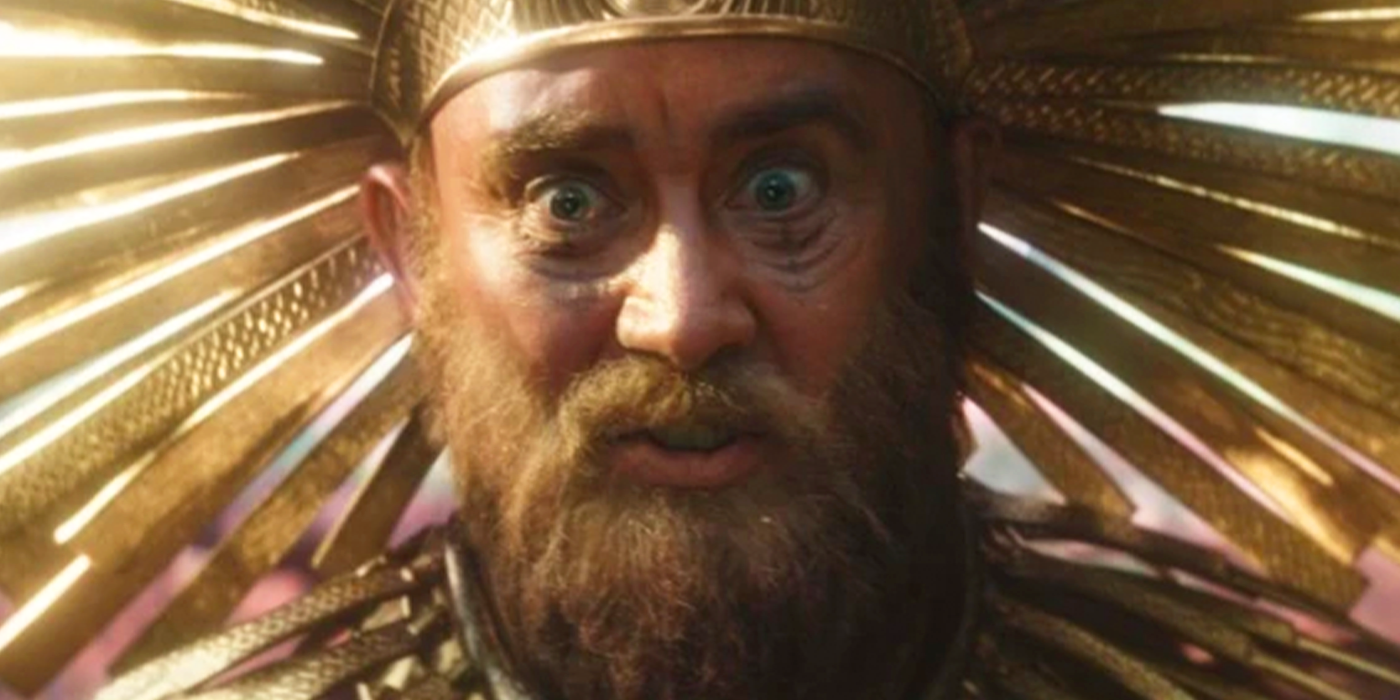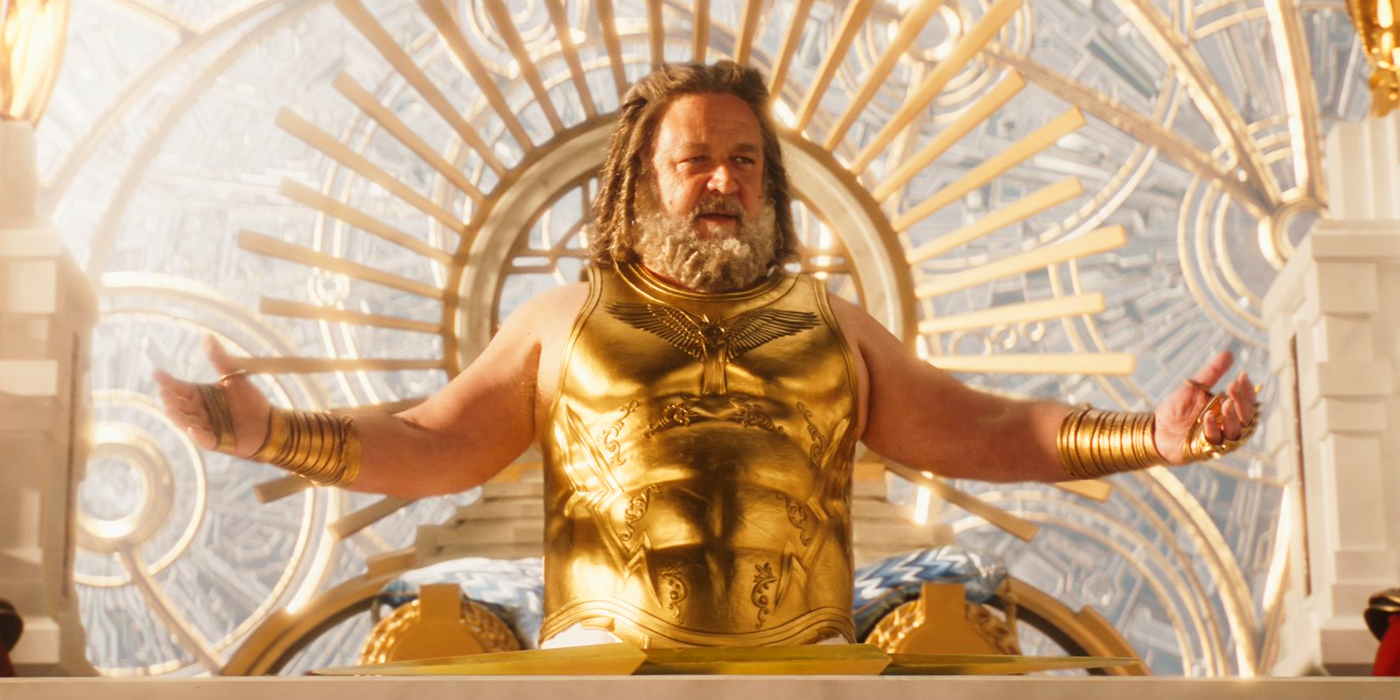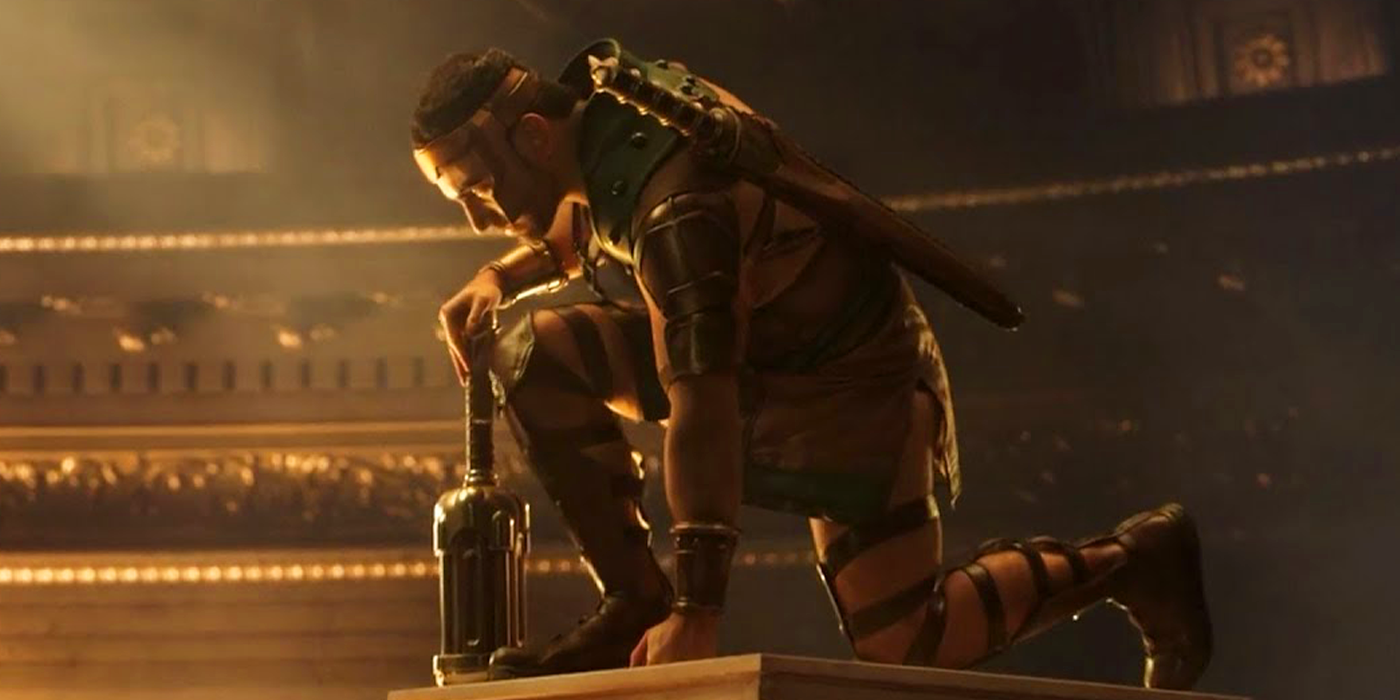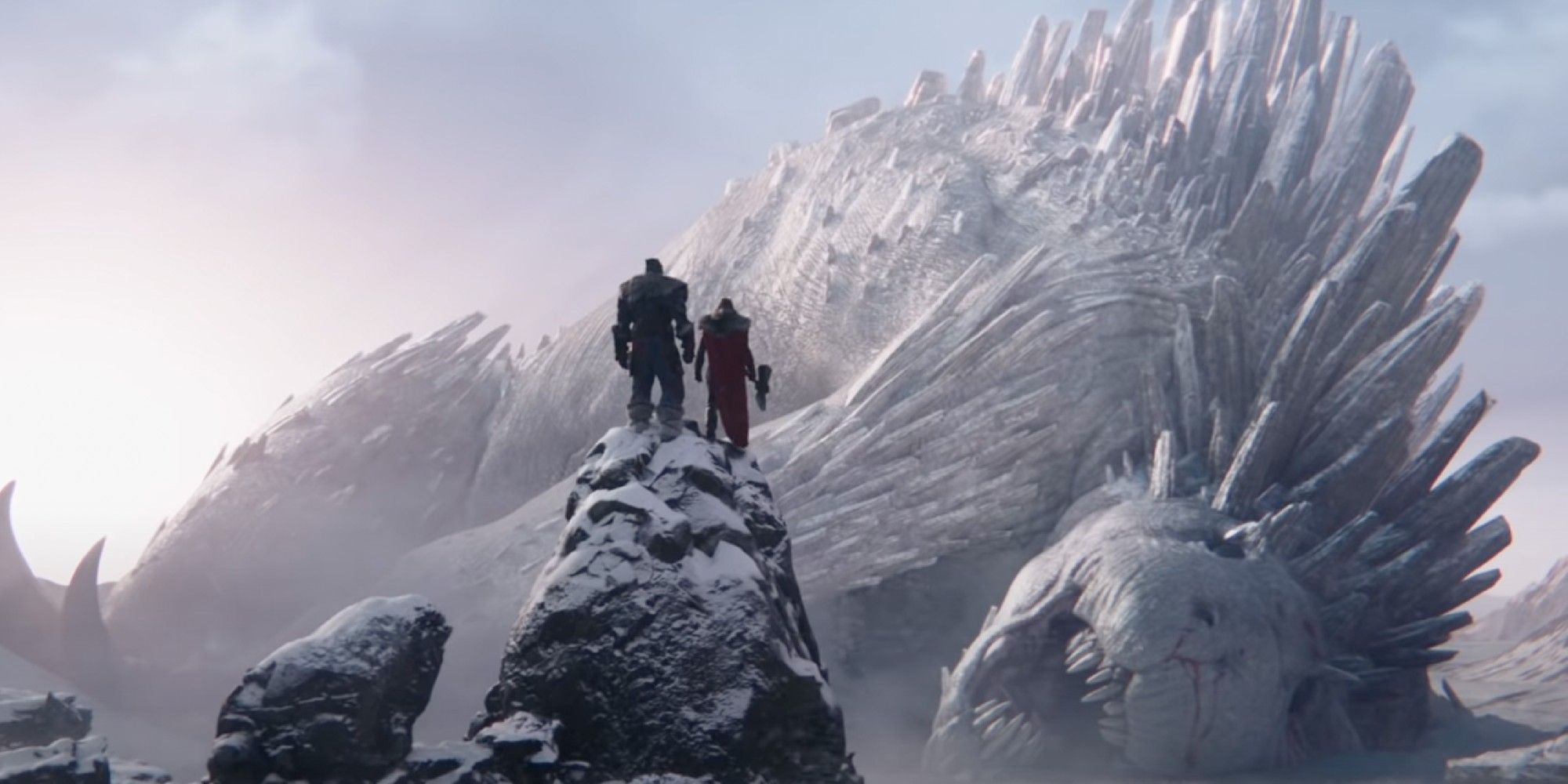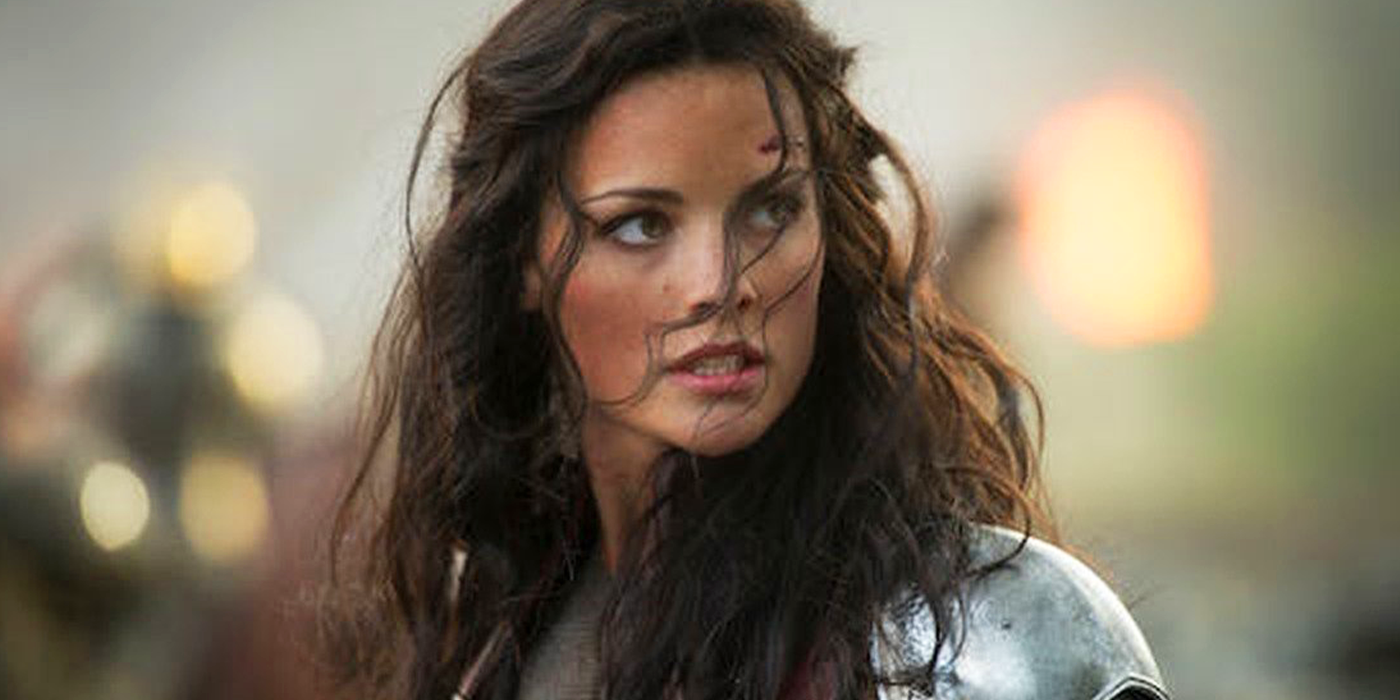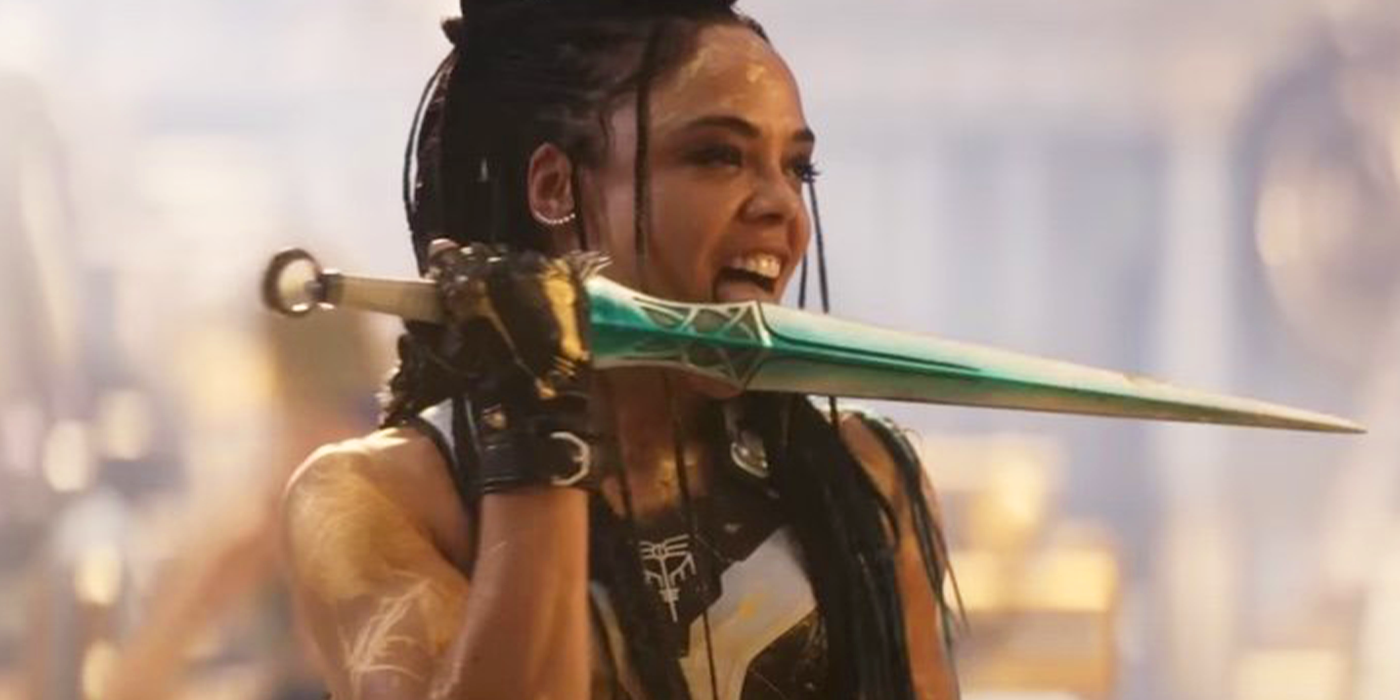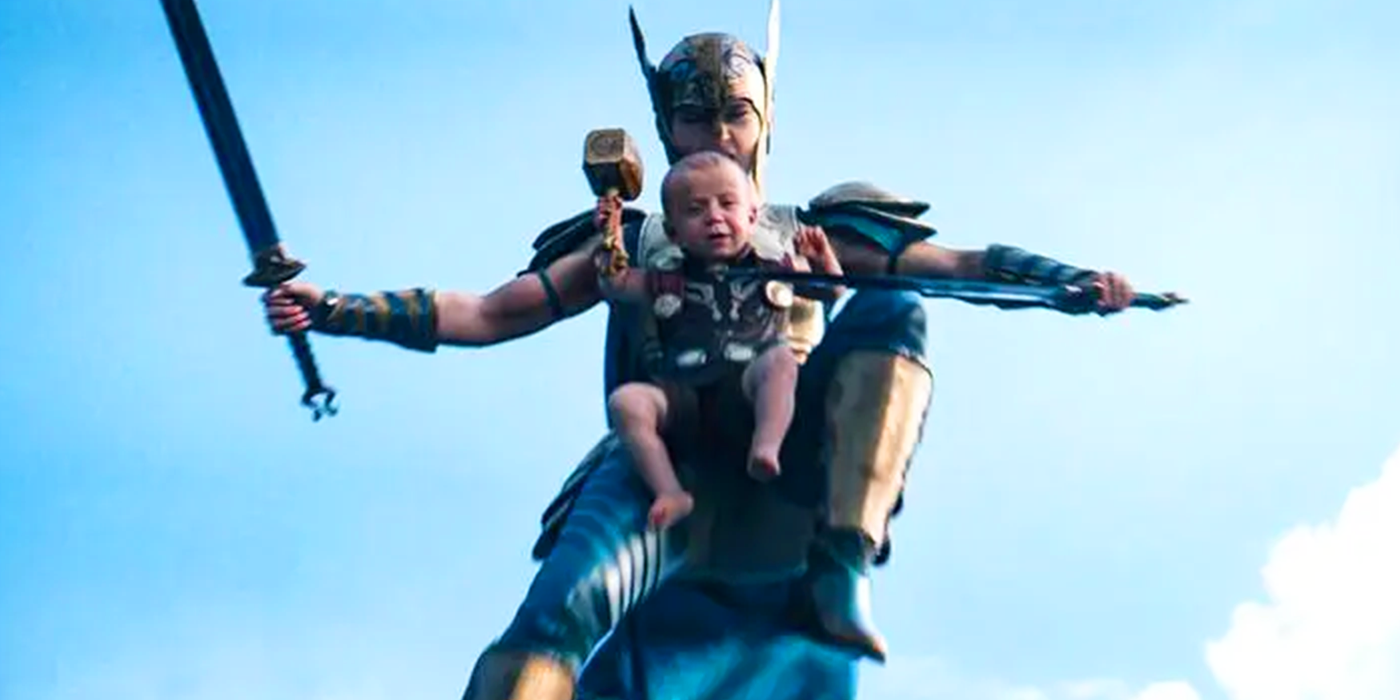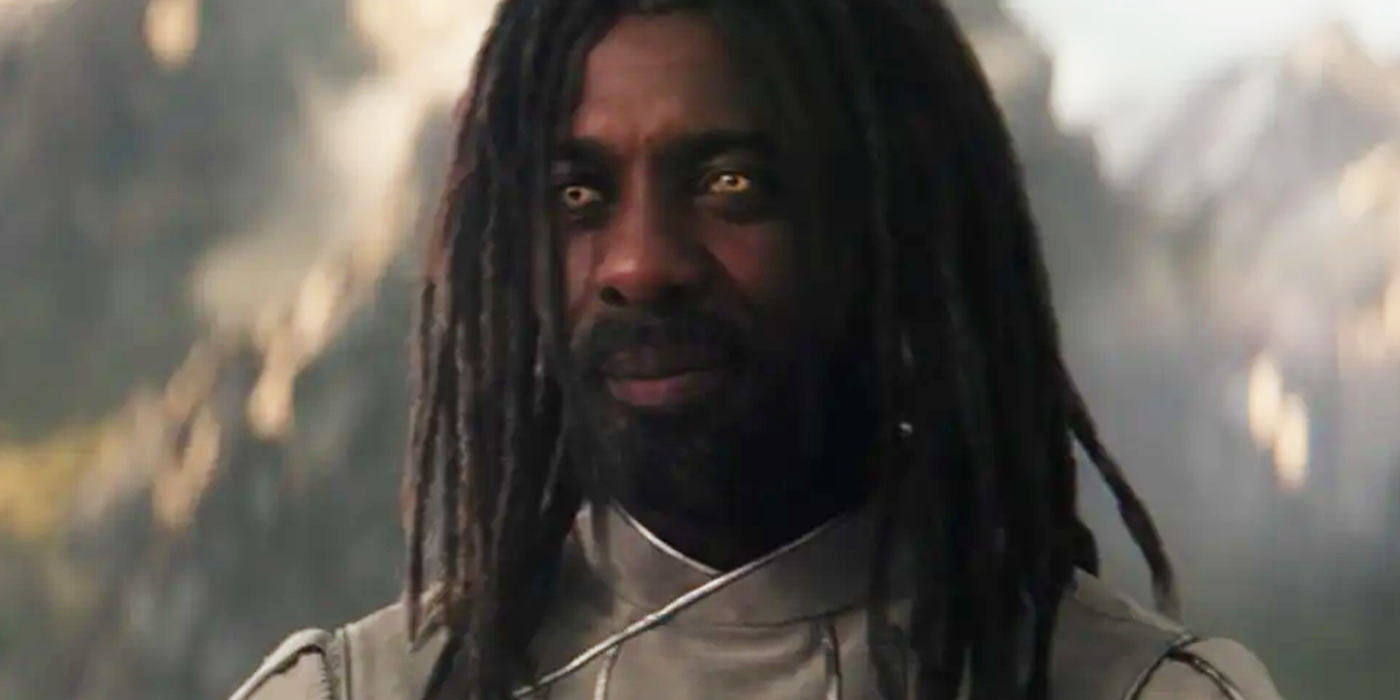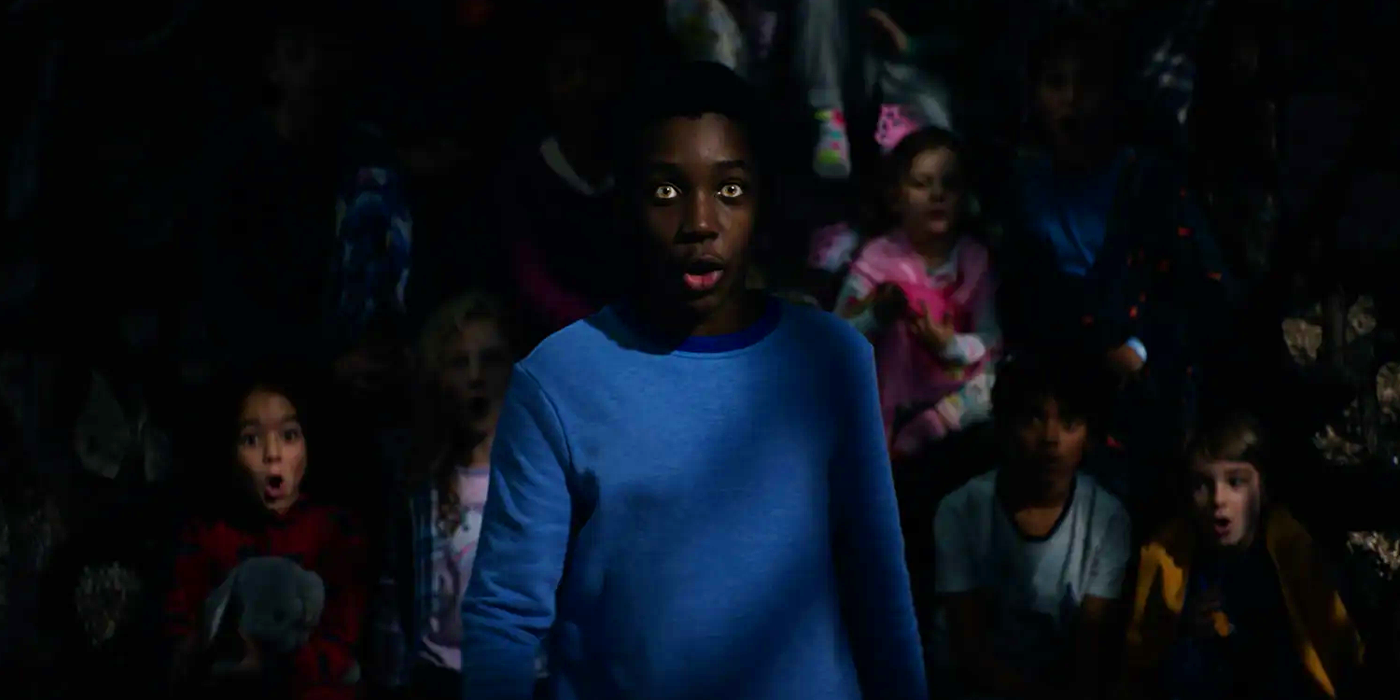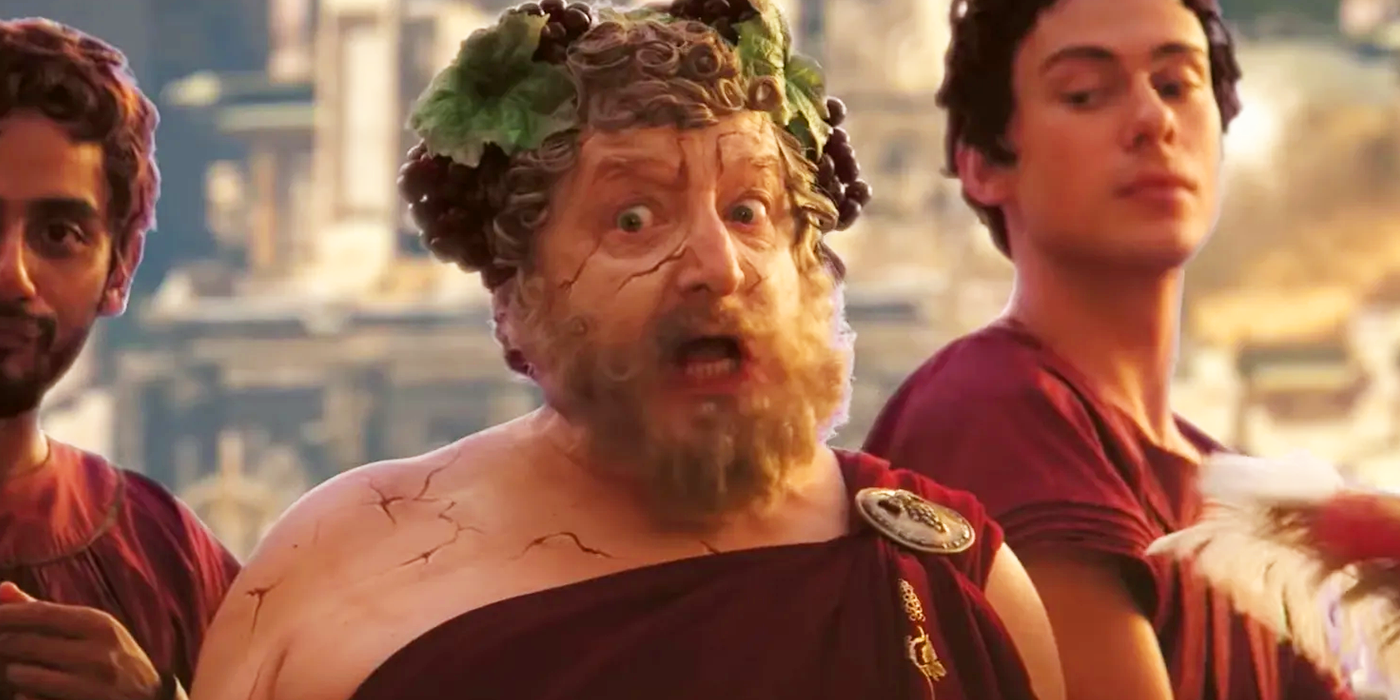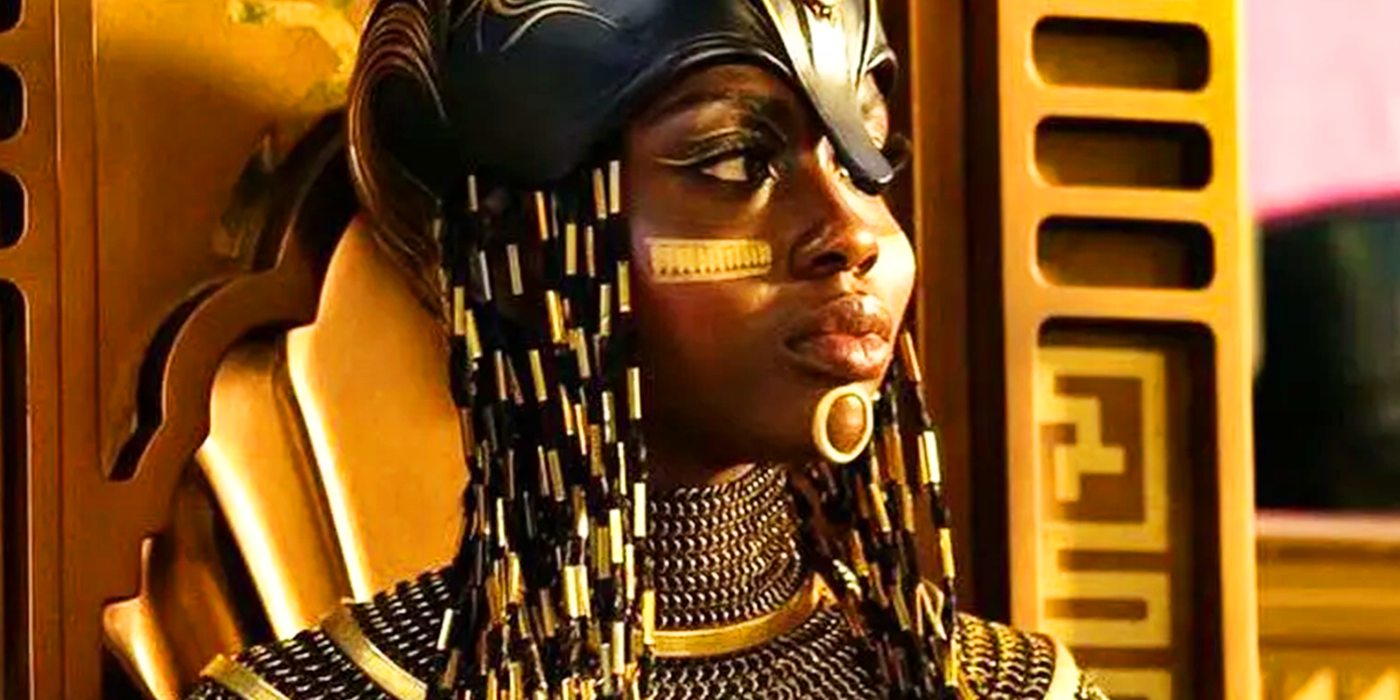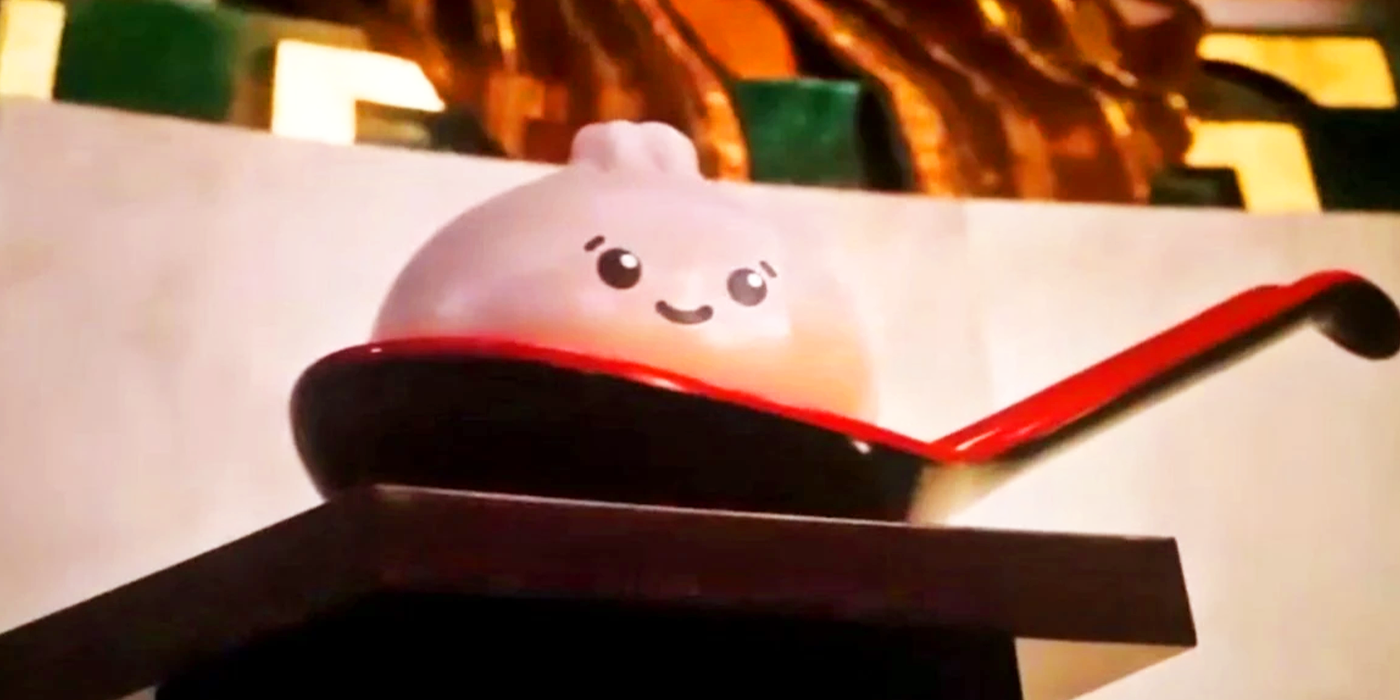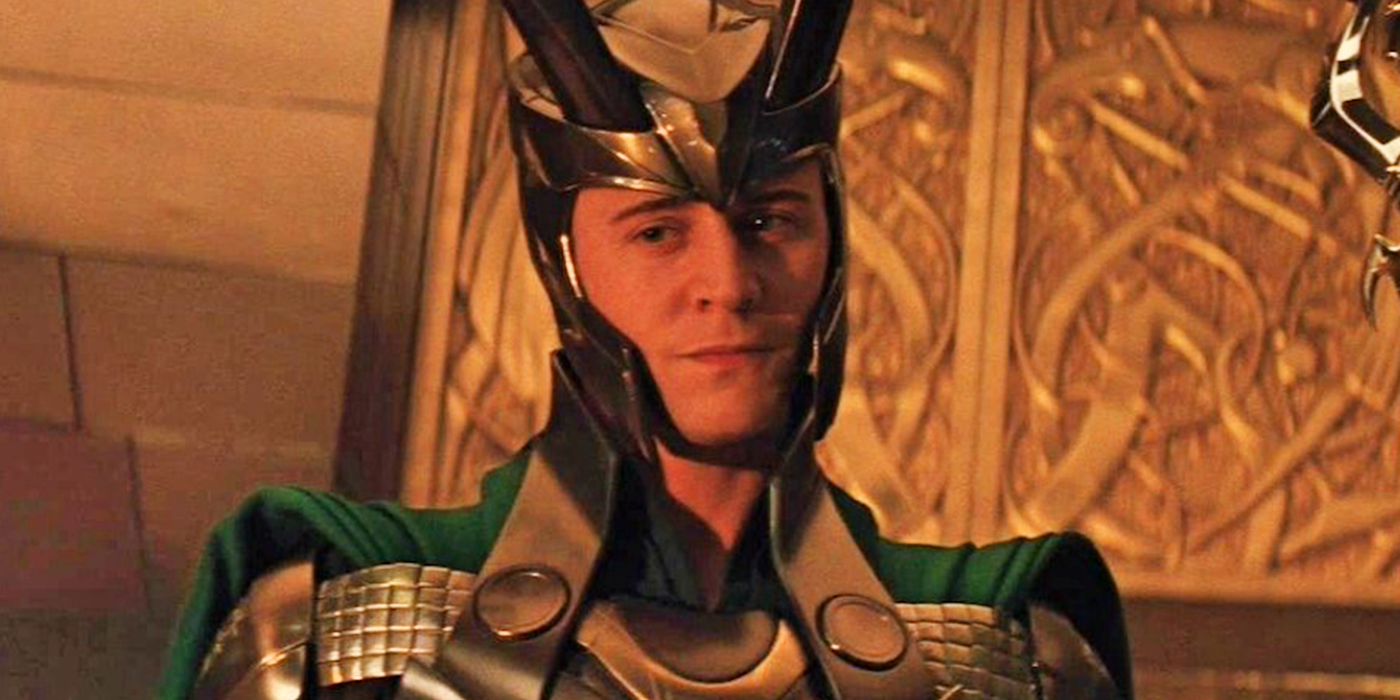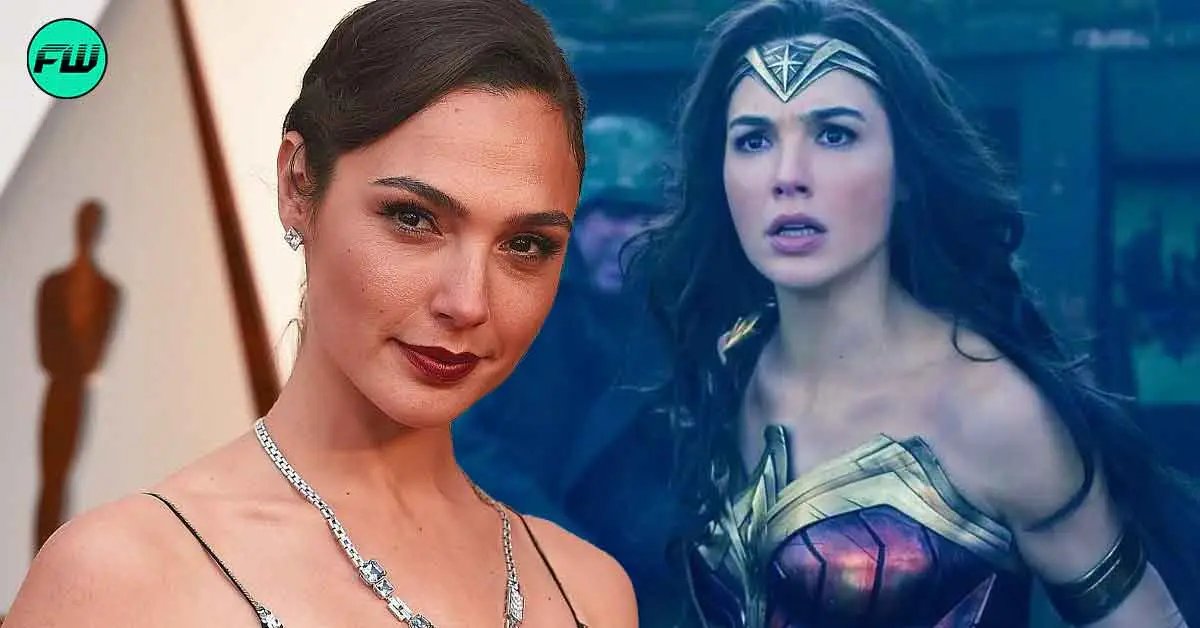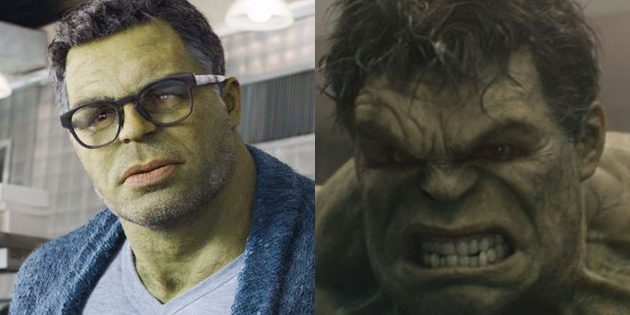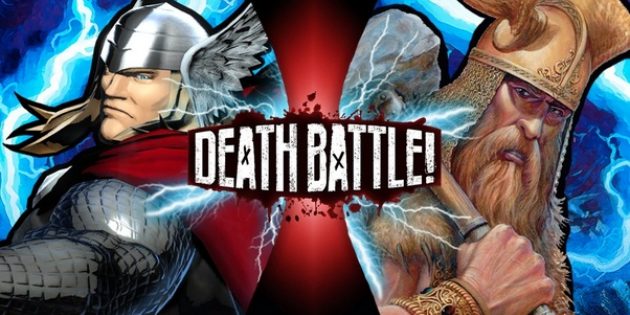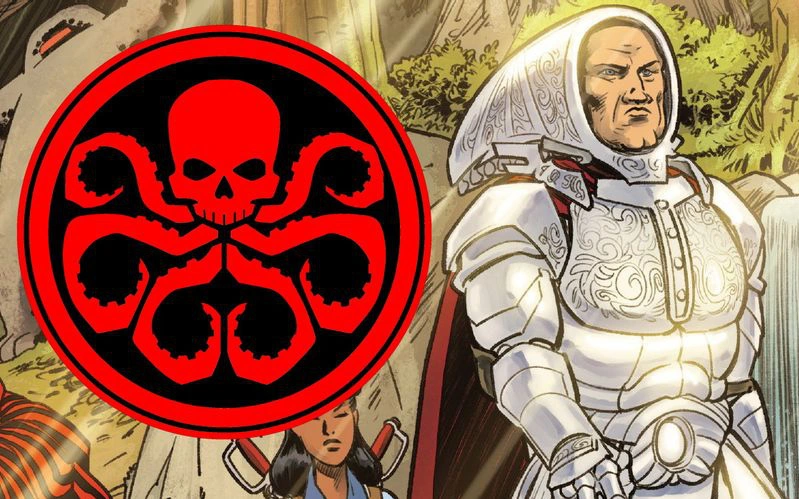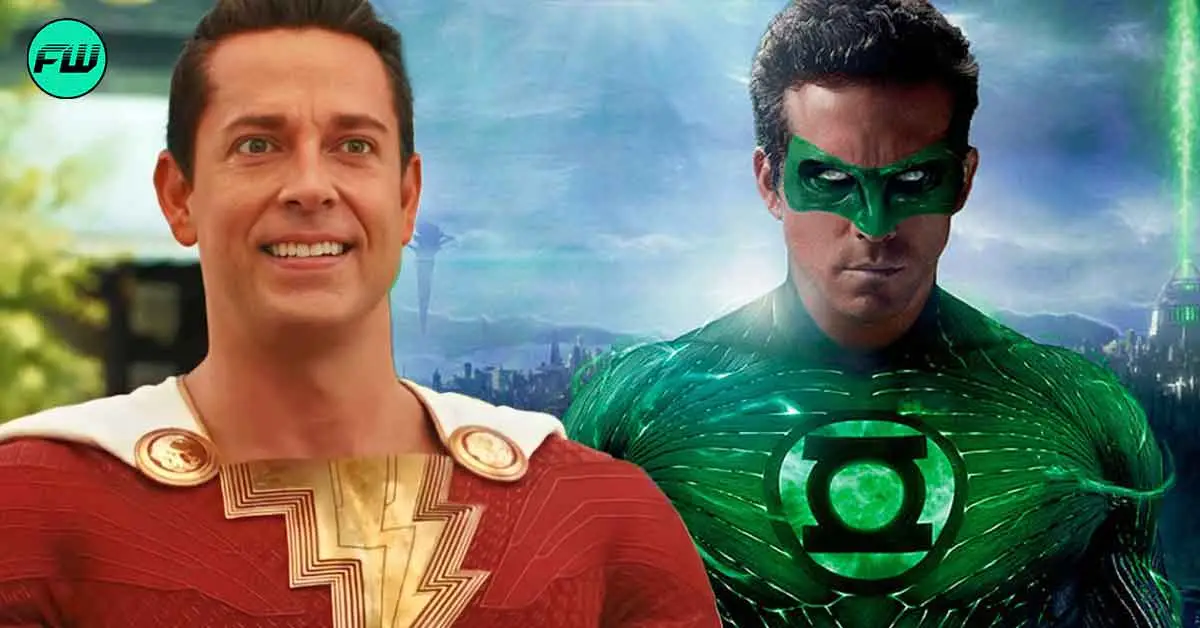Dozens of new gods were introduced in Marvel Studios’ Thor: Love & Thunder, joining the titular God of Thunder and his allies in the battle against Gorr the God Butcher. Taika Waititi returned to direct the MCU’s fourth Thor film, following the success he found with Thor: Ragnarok, and although Thor: Love & Thunder wasn’t as well received, the Phase 4 film did expand on the mythos of the MCU’s gods. Chris Hemsworth became the only original Avenger actor to receive four solo MCU projects, with Love & Thunder seeing the Asgardian take on Gorr the God Butcher, a villain who leaves a trail of dead gods in his wake.
After his daughter’s death, Gorr renounces the universe’s gods, setting out on a mission to eradicate them after coming into possession of the Necrosword. The sword allows Gorr the ability to kill any god and guides him to the mysterious Eternity while corrupting him every step of the way. Gorr is eventually thwarted by Thor and his team, comprising King Valkyrie, Korg, and Jane Foster as the Mighty Thor. On their journey, Thor and his crew come into contact with a plethora of new MCU gods, including some based on real-world deities, all residing in the opulent Omnipotence City. Here are all the gods in Thor: Love & Thunder.
Thor Odinson
Chris Hemsworth debuted as Thor in 2011’s Thor, and has since become a staple of the MCU. The Asgardian God of Thunder found himself traveling with the Guardians of the Galaxy after the events of Avengers: Endgame, but his peace was disrupted by the emergence of Gorr the God Butcher in Thor: Love & Thunder. Thor is loosely based on the Norse deity, who was also the God of Thunder and the wielder of Mjolnir. In the MCU, he is the son of Odin and Frigga, and brother to Loki, the God of Mischief. Thor’s MCU journey has taken him from arrogant child to worthy King of Asgard and beyond.
Rapu
Portrayed by Jonny Brugh, Rapu is the first god that appears in Thor: Love & Thunder, briefly popping up in the film’s prologue. Rapu has no counterpart in real-life mythology but is the god which Gorr and his race worship. While most of Gorr’s planet is a barren wasteland, Rapu resides in a fertile oasis, neglecting his followers. Gorr notices this discrepancy after the death of his daughter, Love, and upon meeting Rapu, decides to renounce the gods and set out on his quest to eliminate them from the universe with the Necrosword. Rapu is Gorr the God Butcher’s first victim.
Zeus
Audiences will already be familiar with the Greek God of the Sky, but Russell Crowe brought a very different interpretation of Zeus in Thor: Love & Thunder. Zeus is the father of the Olympian Gods, one of the most powerful beings in the universe, and an immortal fixture in Omnipotence City in the MCU. These accolades have made him arrogant, lazy, and apathetic to the universe around him and the needs of his dwindling followers. Zeus refuses to help Thor on his quest to stop Gorr the God Butcher from reaching Eternity, though his remarkable weapon, “Thunderbolt,” would come in handy in the final battle against Gorr.
Hercules
Thor: Love & Thunder’s post-credits scene revealed Brett Goldstein as the MCU’s Hercules, the demigod son of Zeus. Hercules is a pivotal character to many storylines in Marvel Comics, so his introduction into the MCU is very exciting, though it seems he will be featured as an adversary to Thor in his early appearances. Hercules was one of Greek mythology’s greatest heroes, slaying or capturing many terrifying creatures to gain immortality and a spot on Mount Olympus with the other gods. It’s unclear when Hercules will make his next MCU appearance, but Goldstein should have a bright future in the franchise.
Falligar the Behemoth
Falligar is one of Gorr the God Butcher’s most notable kills in Thor: Love & Thunder, particularly as he was featured prominently in trailers and promotional material for the Phase 4 film. Known formally as Falligar the Behemoth, Falligar was the patron God of the Galactic Frontier, the champion god of the Tournament of Immortals (he used to battle black holes for fun), and was a close ally to Thor. Falligar, similarly to Rapu, has no counterpart in real-world mythology but was featured in Marvel Comics’ 2012 run of Thor: God of Thunder #3, the storyline in which Thor battles Gorr the God Butcher.
Lady Sif
After being absent for Thor: Ragnarok, Jaimie Alexander reprised her role of Lady Sif in Thor: Love & Thunder. Although only a brief cameo, Sif plays an important role in the film’s storyline, as she is the individual who initially informs Thor of Gorr the God Butcher’s rampage across the cosmos. During her earlier battle with Gorr, the God Butcher severed her arm and left her for dead, though the Asgardian warrior survived. In Norse mythology, Sif is a delicate goddess associated with the earth and fertility, a far cry from Alexander’s depiction of the fierce fighter in the MCU.
Brunnhilde, A.K.A. King Valkyrie
Tessa Thompson debuted as Brunnhilde in Thor: Ragnarok, though she is more regularly referred to as Valkyrie, and Avengers: Endgame saw her be promoted to King of Asgard by Thor. Valkyrie is one of Thor’s fiercest allies in the fight against Gorr the God Butcher, and has transformed New Asgard from the lowly seaside town in Endgame to a tourist hotspot in Thor: Love & Thunder, even home to the Mighty Thor. Valkyrie is based on the Norse figure of Brunhild or Brynhilde, a shieldmaiden and valkyrie who was tasked with guiding the souls of the dead to Valhalla, one of Odin’s most trusted warriors.
Young Frigga
Rene Russo previously portrayed Frigga in the MCU’s Thor franchise and Avengers: Endgame, but for Thor: Love & Thunder, Chanique Greyling took on the role of a younger Frigga in a flashback sequence. Greyling’s Frigga is shown as an Asgardian warrior, charging into battle with a baby Thor strapped to her chest. A powerful sorceress, wife to Odin, and mother to Thor and Loki, Frigga was a formidable character in the MCU, and her death in Thor: The Dark World had a huge impact on Thor and Loki’s MCU journeys. She was the Goddess of Marriage in Norse mythology.
Heimdall
Despite his death in the opening moments of Avengers: Infinity War, Idris Elba’s Heimdall returned briefly in Thor: Love & Thunder’s post-credits scene. He showed up to welcome Jane Foster to Valhalla, the afterlife for Asgardian warriors. Heimdall’s all-seeing eye made him the staunch protector of Asgard during his life, guarding the Bifrost much like he does in real-world Norse mythology. It’s unclear whether Heimdall will return in the MCU’s future, particularly now that his son has been introduced, but his existence in Valhalla suggests he could find a way back to life.
Axl Heimdallson
Thor: Love & Thunder not only introduced a new version of Thor to the MCU in the form of Jane Foster’s Mighty Thor, but also debuted the son of Heimdall, Astrid “Axl” Heimdallson. Axl has inherited his father’s all-seeing eye, though he can’t fully control his powers yet, but he proves himself invaluable in helping Thor and his team rescue New Asgard’s children and take on Gorr the God Butcher. In Thor: Love & Thunder’s final moments, Axl bravely fights alongside Thor, and uses the Bifrost to return the children to New Asgard.
Dionysus
Veteran character actor Simon Russell Beale briefly appears Dionysus, the Greek God of Wine and Festivity in Thor: Love & Thunder. In Greek mythology, Dionysus is known for throwing wild parties, described as hedonism personified, the Greek equivalent of the Roman Bacchus. Understandably, a number of cults dedicated to Dionysus sprang up in ancient times, with his worshipers being intensely devoted to him and what he represented. Interestingly, though Zeus is spotted with a harem around him, it’s actually Dionysus who was known for his retinue of maenads, female followers who were often depicted as being in a frenzy.
Bast
Akosia Sabet personified Bast in Thor: Love & Thunder, a member of the council of gods in Omnipotence City. Marvel Studios audiences will be familiar with Bast from the Black Panther franchise, as she is the panther goddess who is worshiped by the Wakandan people, and the being who gifts the Black Panther their superhuman abilities. Thor: Love & Thunder marked the first time Bast had physically been seen in the MCU, potentially creating the opportunity for the goddess to make further appearances in the flesh in the MCU’s future.
Every Other God In Omnipotence City
Bao – Bao is the God of Dumplings, and a friendly, cheerful god who looks just like an anime dumpling with an emoji face. Unlike some of the other gods in Omnipotence City, he doesn’t seem threatened by Thor and his allies, but happy to see them.
Old Kronan God – As they’re walking to their seats, Korg points out his old Kronan god, who resides on a huge throne reminiscent of the Iron Throne of Game of Thrones. In a clever visual joke, the throne is made of scissors – after all, rock beats scissors.
Minerva – The Roman goddess Minerva can also be spotted in the Omnipotence City scene, though she’s more regal than some of the other gods. In mythology, Minerva is the goddess of justice, law, and wisdom, and is well-respected among the other gods.
Artemis – Yet another Greek deity, Artemis appears among the godly characters in Thor: Love & Thunder, though she might be more at home with the Asgardians. Artemis is considered the goddess of the hunt and wild animals. She’s also associated with the moon in many cultures.
Elche Goddess – An “Elche Goddess” is also listed in the credits for the Omnipotence City scene. She likely takes her name from the Lady of Elche, the name of an ancient bust that depicts a strange pagan goddess with wheels on her head. Some have associated her with Tanit, the patron goddess of the ancient city of Carthage.
Serpent God (K’uk’ulkan or Quetzalcóatl) – In the Golden Palace of Omnipotence City, one of the most noticeable gods is a giant, feathered serpent twining around one of the massive pillars that holds up the domed roof. This is undoubtedly Quetzalcóatl, or K’uk’ulkan, the respective Aztec and Mayan names for the same serpent god. In ancient Mesoamerican belief, he was the god who brought winds, rain, and the sun. Interestingly, Namor is referred to as K’uk’ulkan by his followers in Black Panther: Wakanda Forever.
Goddess of the Dead – In the credits, there is a “Goddess of the Dead” who was also spotted in the scene with the other gods. In the MCU, Hela is the Goddess of Death, so it’s unclear which deity this is. However, there are a number of goddesses associated with death across mythology, including the Morrigan, Aita, Persephone, Dea Tacita, Proserpina, Shiva, and others.
Jademurai God – A Jademurai God is also briefly seen in the Golden Palace. Played by Kuni Hashimoto, it’s unclear if the Jademurai God is based on a real deity, or is a creation for the MCU. However, he appears to be a counterpart of a Japanese god of some sort.
Fur God – The Hobbit’s Stephen Hunter plays a Fur God in the Golden Palace, though not much is known about him. One of the more niche gods in the movie, he’s exactly what he appears – the patron saint of fur.
Other Gods & Goddesses Referred To In Thor: Love & Thunder
Loki – It wouldn’t be a Thor movie without at least a reference to Loki. Thor: Love & Thunder accomplishes this in a clever way, with Thor revealing his back is covered with tattoos for those he’s lost, the most prominent being for Loki, his adopted brother and the God of Mischief. He’s also shown in a brief flashback scene and portrayed once again by Matt Damon in New Asgard’s theatrical show.
Odin – Like his mischievous son, Odin, Thor and Loki’s father and the King of the Asgardian gods, is also briefly shown in Korg’s flashback story sequence. Likewise, he’s also included on Thor’s tattoo, with his name being part of a scroll tattoo with the names of loved ones Thor has lost.
Sequoia Queen & Oaken King – The Sequoia Queen and Oaken King are shown briefly in an image as two of Gorr’s victims. Their story in Thor: Love & Thunder is similar to the comics, where, as the rulers of Glenglavenglade, the Garden Eternal, they were two of the first gods killed by Gorr the God Butcher.
Hela – Hela, Thor’s half-sister and the Goddess of Death, is also referenced in Thor: Love & Thunder. In theory, Hela is dead, killed by Surtur in Thor: Ragnarok. However, as audiences never saw a body, it’s entirely possible she survived and will return.
Ra – Ra is also mentioned in Thor: Love & Thunder. As the most important and powerful deity in Egyptian mythology, Ra was the father of the gods and of all creation. He also ruled over the sun, light, and power as the ultimate king.
Flower God – In one scene, there is a god made of flowers who appears only briefly. It’s unclear who this god might be, and was likely a creation for Thor: Love & Thunder.
Aegir – The cheekiest nod to a god in Thor: Love and Thunder was the name of the Asgardian tour boat that they repurpose to travel to Omnipotence City. The boat is named Aegir, which, in the comics, is the name of Asgard’s God of the Seas.



